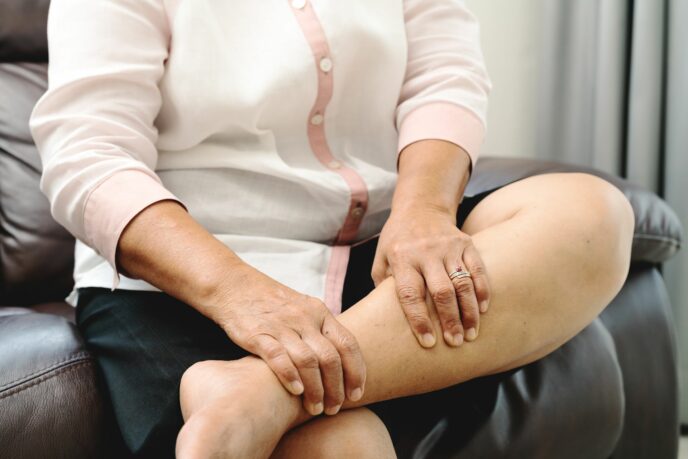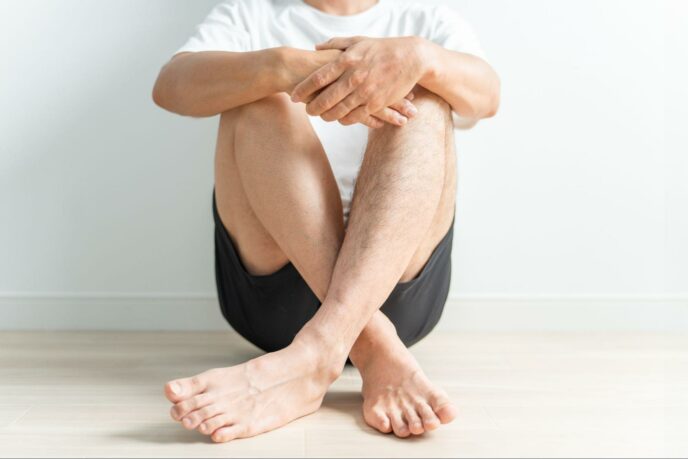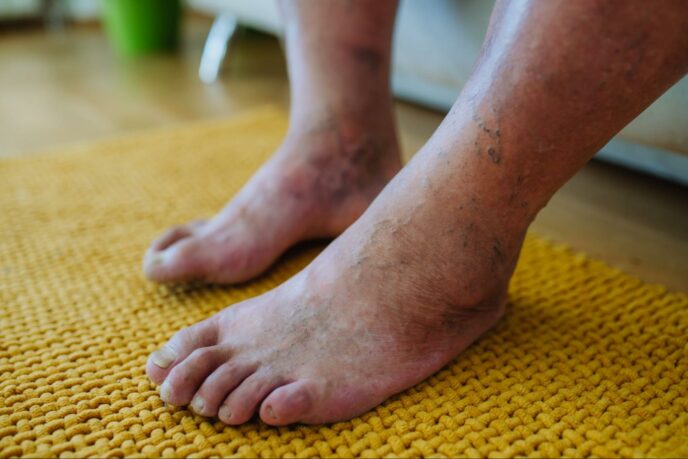
Why Am I Losing Hair on My Lower Legs?
Hair loss on the legs can occur due to a variety of factors in both men and women. It could be a result of genetic predisposition, or a deficiency of vital nutrients like iron or zinc. However, lower leg hair loss may also indicate an underlying health problem, such as hormone imbalances, skin conditions, autoimmune diseases, or peripheral artery disease (PAD), which affects blood circulation to the legs. In this article, we will explore the reasons behind leg hair loss, the significance of PAD, and the available treatments to address this issue.
What Causes Hair Loss on Legs?
Aging
Just like the hair on the scalp, hair on the legs may thin out with age. This is a natural part of the aging process and is usually not a cause for concern.
Genetics
Some people may be genetically predisposed to thinner leg hair or experience hair loss on their legs due to hereditary factors.
Hormonal Changes
Hormonal fluctuations, particularly during pregnancy or menopause, can affect hair growth patterns on various parts of the body, including the legs.
Nutritional Deficiencies
A lack of essential nutrients in the diet, such as iron, zinc, or biotin, can contribute to hair loss on the legs. Ensuring a balanced diet rich in vitamins and minerals is important for maintaining healthy hair growth.
Skin Conditions
Skin conditions such as eczema, psoriasis, or dermatitis can affect the lower legs and lead to hair loss as a secondary symptom. These conditions may cause inflammation and irritation, which can damage the hair follicles.
Medications
Some medications, such as chemotherapy drugs, blood thinners, or retinoids, may cause hair loss as a side effect. If you suspect that your medication is contributing to hair loss on your legs, consult your healthcare provider for alternative options.
Autoimmune Diseases
Autoimmune disorders like alopecia areata or lupus can cause hair loss in various parts of the body, including the legs. In these conditions, the immune system mistakenly attacks the hair follicles, leading to hair loss.
Diabetes
Diabetes can also cause hair loss on the legs. High blood sugar levels can damage blood vessels throughout the body, including those in the legs. This impaired blood flow can restrict the delivery of oxygen and nutrients to the hair follicles, which may lead to hair loss.
Peripheral Artery Disease
PAD is a condition that occurs when arteries in the legs become narrowed, reducing the blood supply to the legs. Restricted blood flow to the legs and feet may impact the health of the hair follicles, leading to hair loss on the legs.
How Does PAD Cause Hair Loss on the Legs?
Hair follicles, like all other tissues in the body, need a steady supply of oxygen and nutrients delivered by blood vessels to function properly. Peripheral artery disease restricts blood flow to the legs due to accumulation of plaque in the arteries. Plaque buildup hardens and narrows the arteries making it harder for blood to flow smoothly, preventing the delivery of oxygen and other vital nutrients to the tissues of the legs. When blood flow is restricted due to PAD, the hair follicles may not receive enough oxygen and nutrients, which may lead to thinning or hair loss.
Here’s a breakdown of the process:
- Plaque buildup in arteries narrows them, reducing blood flow to the legs.
- Hair follicles don’t receive enough oxygen and nutrients.
- Hair follicles shrink (miniaturization) and produce thinner, weaker hairs.
- Hair growth slows down and eventually stops altogether, leading to hair loss.
Warning Signs of PAD
Leg hair loss is a common symptom of PAD and is more likely to occur if your leg hair appears patchy or is accompanied by certain symptoms.
- Pain in your legs, especially when walking (claudication)
- Leg cramps
- Numbness or weakness in your legs
- Sores that don’t heal well
- Changes in skin color on your legs
Diagnosing Hair Loss on Legs
If you think that peripheral artery disease (PAD) might be causing your hair loss, it is essential to get a medical assessment and diagnosis. Our affiliated vascular specialists at American Endovascular can conduct a comprehensive examination, which may include non-invasive tests such as ankle-brachial index (ABI) testing, to evaluate blood circulation in your legs, or an angiogram to identify blockages in your arteries. If PAD is confirmed, treatment options may include lifestyle changes, medications, or procedures to improve blood flow and manage symptoms.
How Long Does it Take for Leg Hair to Grow Back?
If you are experiencing hair loss on your legs and it is not related to PAD, your hair may regrow after receiving treatment for the underlying condition causing the hair loss. However, if the hair loss is caused by PAD, increasing blood flow to your legs through minimally invasive treatments such as angioplasty, atherectomy, or stent placement may help promote hair regrowth. It’s important to keep in mind that there is no guarantee that your leg will regrow hair after treatment. If you have any questions regarding hair regrowth after treatment, we recommend consulting with one of our vascular doctors who can provide you with the necessary information and guidance.
Treat Your Leg Hair Loss With American Endovascular
If you suffer from abnormal hair loss on the legs accompanied by other bothersome and concerning PAD symptoms, American Endovascular & Amputation Prevention has the expertise and skill set to come to your aid. Our vascular specialists have seen a variety of some of the most chronic and challenging cases when it comes to vascular health, and just like we’ve helped those patients, we can help you. When you come to see us, you can expect a warm welcome, a detailed assessment, an accurate diagnosis, and an effective treatment plan to put you on the path to healing. Don’t wait – schedule an appointment with us today so that you can benefit from early treatment. We’re eager to assist you.
Related Blogs & Videos
Learn more about vascular health, prevention, and care for Peripheral Artery Disease.




